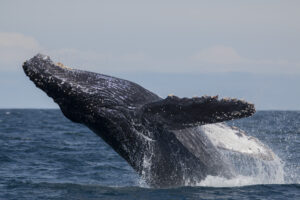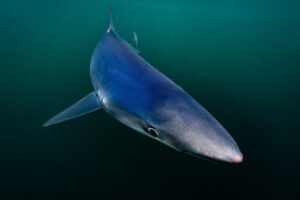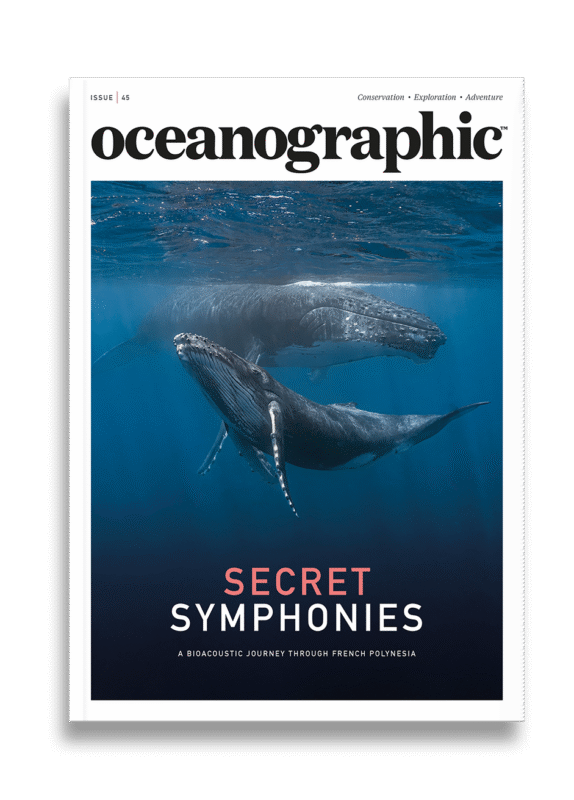Invasion innovation: Hawai'i turns the tide on its marine menace
A striking tropical fish, easily identified by its electric-blue stripes and lemon-yellow skin, the bluestripe snapper - or ta'ape - doesn’t belong in Hawaiian waters, yet its successful establishment here is now wreaking havoc on the marine ecosystem.
What used to be a vibrant, diverse ecosystem of fish species in the waters of Moloka’i, an island located between O’ahu, Maui, and Lānaʻi, in the Hawaiian archipelago, now looks starkly different in the wake of a persistent invasive species.
Local fisherman Kohl Naehu describes the ocean habitat below the surface as a “carpet of ta’ape,” completely overrun by the Bluestripe Snapper – known in Hawai’i by its Tahitian name, ta’ape. A striking tropical fish, easily identified by its electric-blue stripes and lemon-yellow skin, this fish doesn’t belong in these waters, yet its successful establishment in its new environment is wreaking havoc on the marine ecosystem.
Invasive species pose a severe global threat that is under-appreciated, underestimated, and often unacknowledged, according to a recent report from the Intergovernmental Science-Policy Platform on Biodiversity and Ecosystem Services (IPBES). And while it is according to that report that they are considered one of the five most-critical direct drivers of biodiversity loss, the threat they pose is “too often ignored until it is simply too late.”
Environmental engineer Dr. Tracy Fanara cautions that “unlike visible dramatic events like hurricanes or wildfires, invasive species often proliferate in silence, yet their impact is steady and profound.”
Often labeled one of the invasive species capitals of the world, Hawai’i is home to more than 5,000 non-native plants and animals. Among these, species deemed invasive due to their ecological impact cost the state tens of millions of dollars annually. This widespread takeover of ta’ape is one of the major threats to Hawai’i’s reefs, according to Fanara, outcompeting native fish for food and habitat and disrupting the natural balance of the coral reef ecosystem.
“These impacts don’t remain underwater,” notes Fanara. They ripple into coastal communities, affecting subsistence fishing, local economies, cultural practices, and even tourism. “The introduction of this species is often cited as a cautionary tale of how well-intentioned ecological interventions can result in long-lasting and unintended consequences,” she adds.
Conservation International – a leading environmental non-profit – has been hard at work responding to the impacts of ta’ape with sustainable strategies aimed at putting pressure on the proliferating reef-wrecking fish.
“Throughout the globe, climate change is expected to exacerbate the impacts of invasive species,” says Matt Ramsey, Senior Director, Conservation International’s Hawai’i program. “We need to be developing solutions to address this challenge while meeting other growing needs such as food security and community resilience.”
From encouraging consumption to repurposing its skins in design applications, innovative tactics are shedding light on the pervasive problem, while creating sustainable business opportunities aimed at restoring Hawai’i’s fragile marine ecosystems.
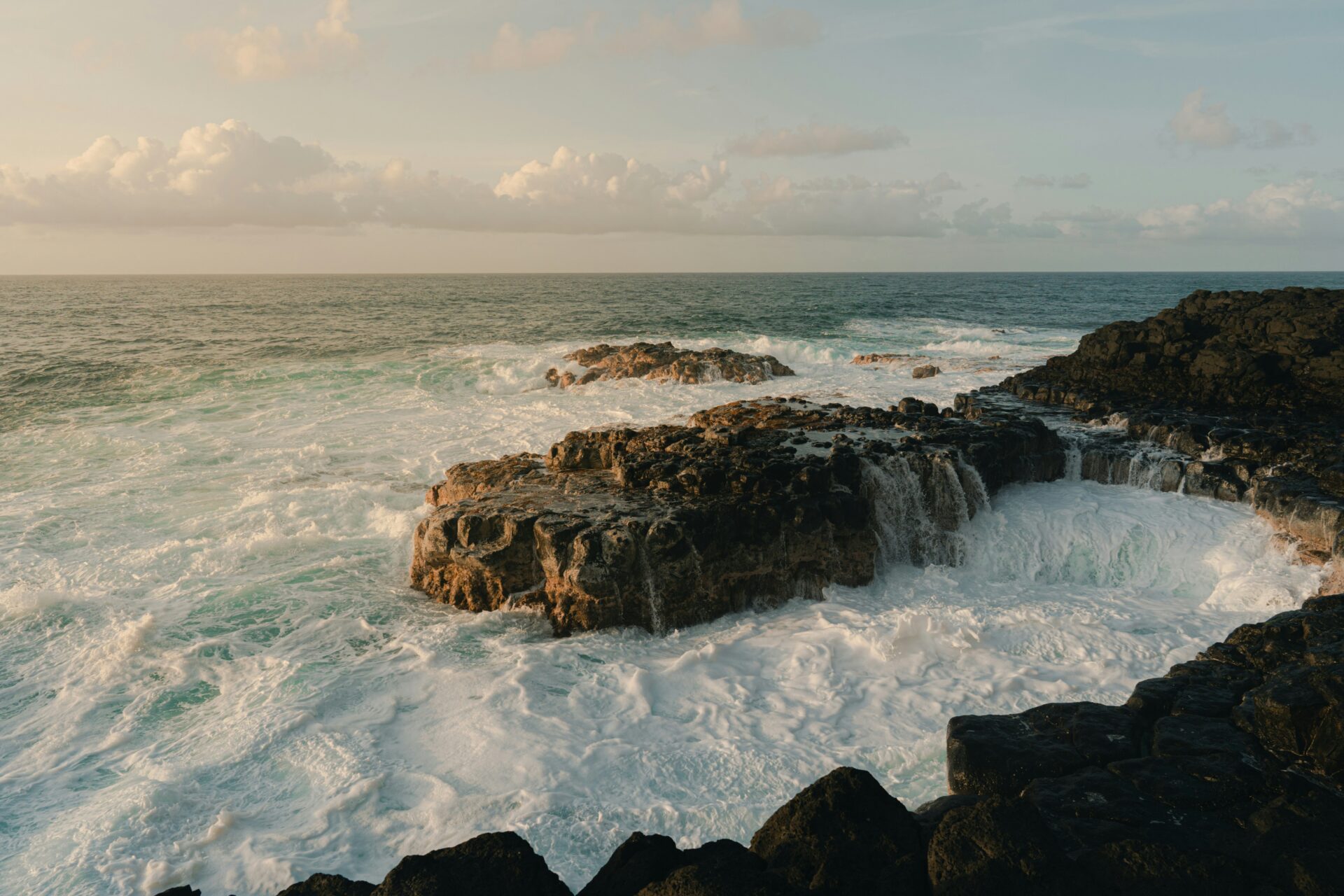

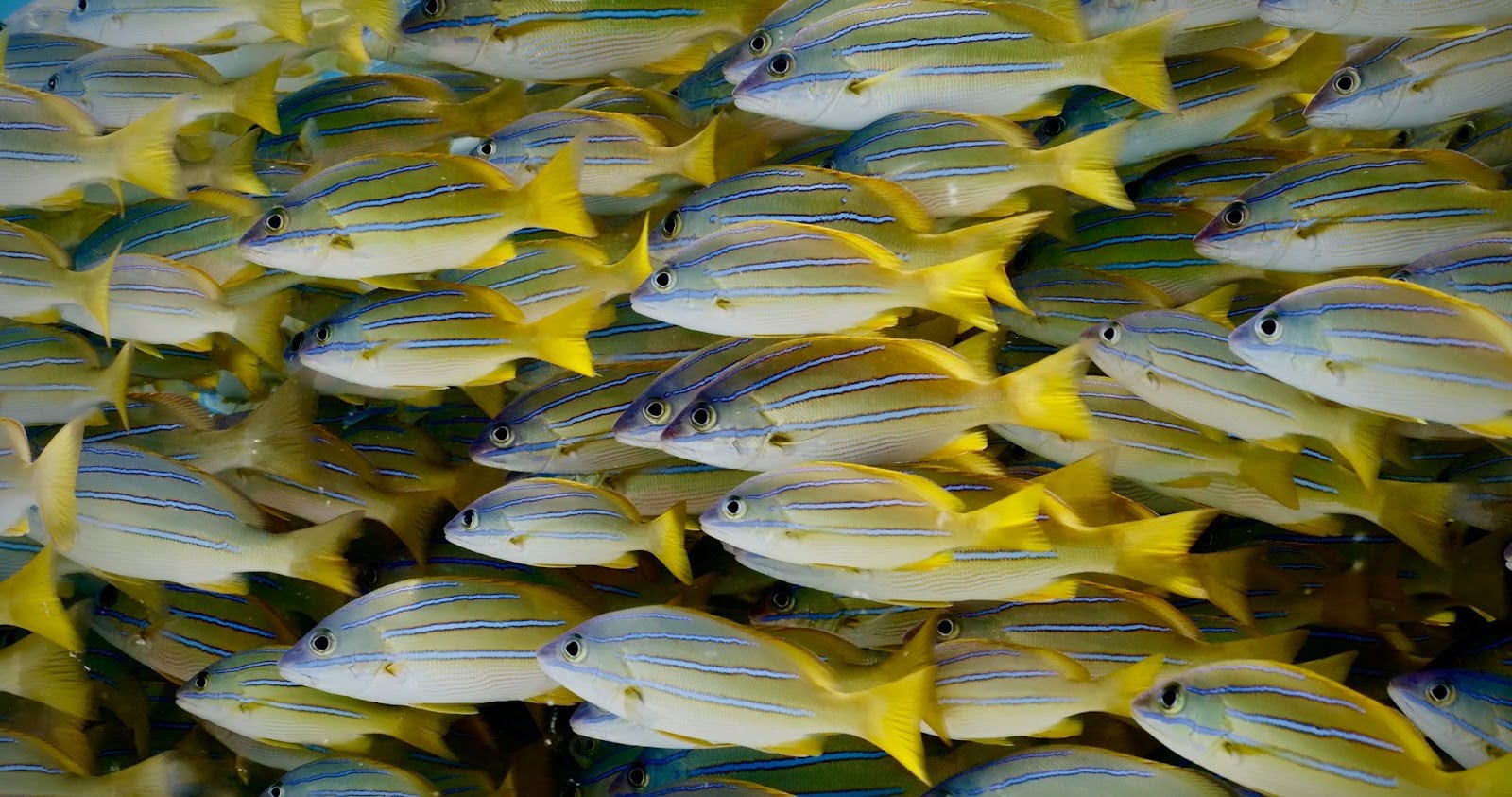
Native to the South Pacific, ta’ape were first introduced to the eastern shores of O’ahu in the 1950s (releasing approximately 3,000 fish over a six-year period) to bolster fishing opportunities and establish a new food source. The species – which naturally school in the thousands and breeds prolifically – quickly swelled to an unwelcome spread across the 1,500-mile Hawaiian archipelago.
Fishing these waters, Naehu has seen the destruction and negative impacts of ta’ape first-hand. He and his brother now target the invasive species, not for money or prestige, but to help make a much-needed difference. “We’ve noticed the ta’ape populations have boomed, and it’s troubling because the schools replenish themselves faster than we can remove them,” says Naehu.
As ta’ape continue to increase in number, their aggressive feeding behaviour and competitive dominance over native species will likely intensify, according to Fanara. “Allowing ta’ape to run rampant threatens not only the health of the reef but also the health and heritage of the communities that depend on it,” she adds.
According to Helen Roy, a professor at the U.K. Centre for Ecology & Hydrology and University of Exeter with over 20 years of experience studying invasive species including as co-chair of the IPBES report, while there are many options for controlling invasive species in terrestrial and freshwater environments, there are currently few options in marine environments.
“This is primarily a consequence of the openness and connectedness of marine systems, which present many technical challenges,” says Roy, who also flags that there have been no fully successful eradication programs for established invasive species in marine ecosystems, reinforcing that prevention is key.
With a lack of state-wide effort to manage ta’ape, more grassroots, community-driven initiatives are emerging – spearheaded by Conservation International Hawai’i – to transform this invasive species problem into a resource that can help boost food security, support local fishermen, and reduce pressure on native species.
“Through the Ta’ape Project, launched in 2020, our goal is to create triple-win outcomes – solutions that benefit local fishers, the businesses that partner with us, and, of course, our reefs and oceans,” says Jhana Young, Sustainable Seafood Senior Manager, Conservation International Hawai’i.
As with most things, it’s important to keep supply and demand in mind. While ta’ape populations are currently abundant, Fanara cautions that should demand spike, there is a risk that harvesting could become unsustainable if demand begins to outpace the natural replenishment rate.
“While the goal is to reduce the population of this invasive species, an unchecked market incentive could drive over-harvesting, undermining the original intent,” urges Fanara. While one of Conservation International Hawai’i’s goals is to drum up enough market pressure to keep the ta’ape populations in check, should there ever come a time when the data shows a significant drop in populations, Young is quick to highlight that they and their partners are prepared to pause and re-evaluate to ensure ecological integrity is maintained.
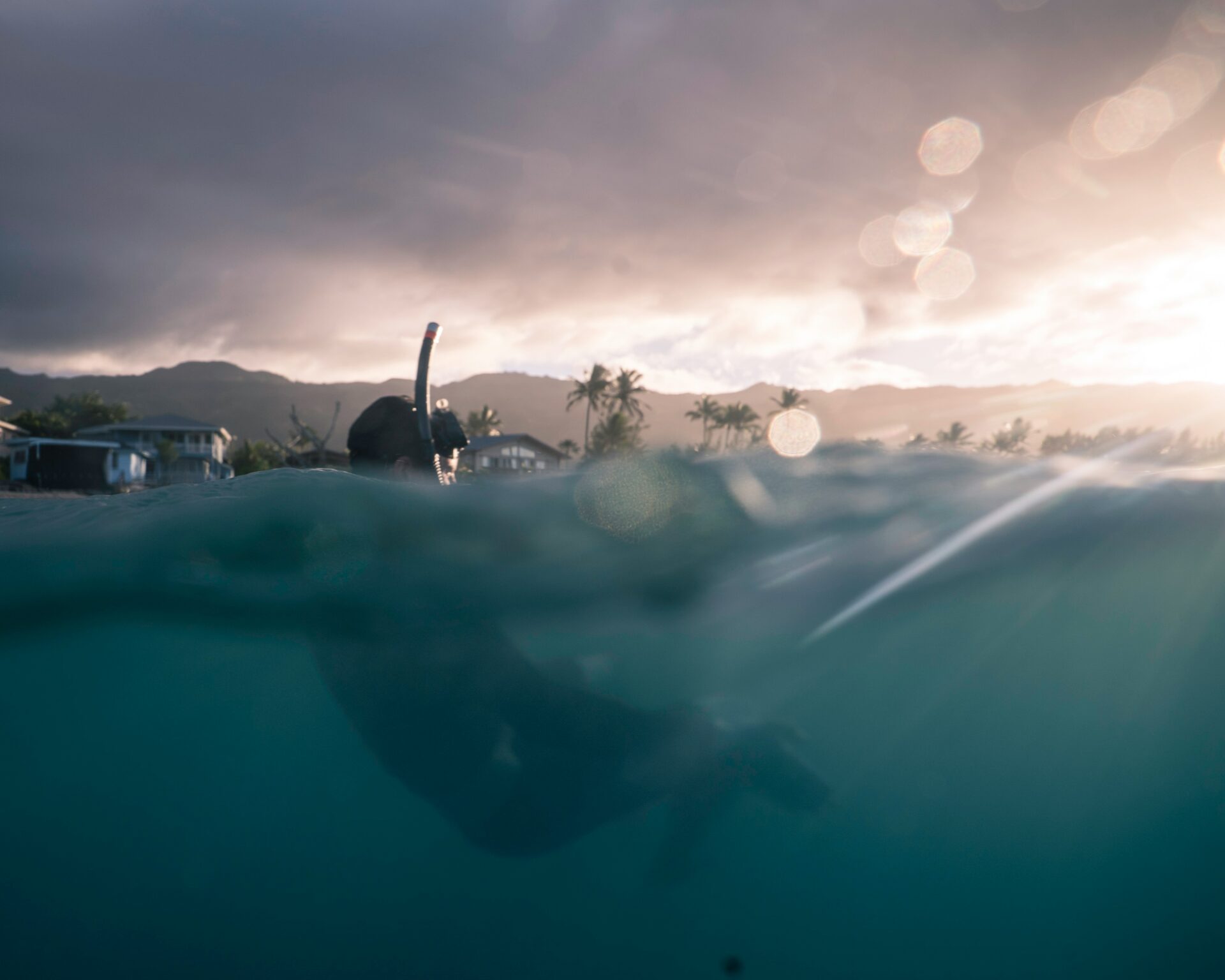
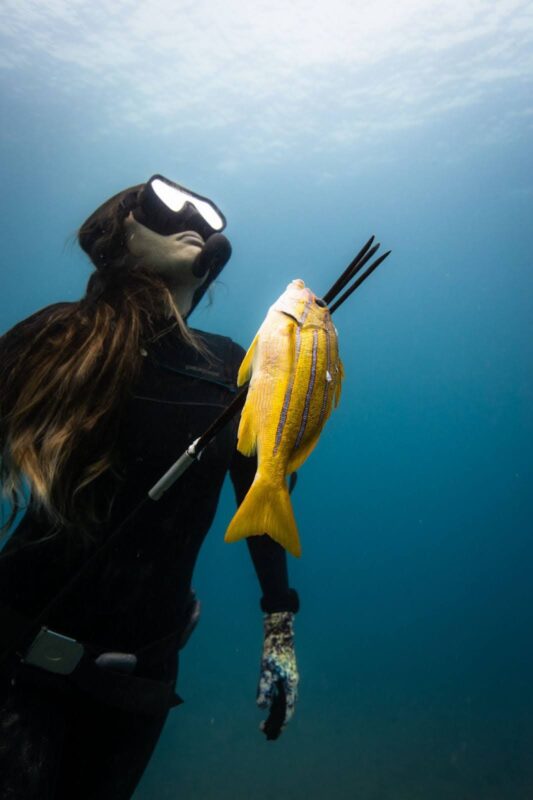

“Ta’ape are perceived by many fishermen as ‘trash fish’,” says Young. “They are typically caught by accident and either thrown back or used as bait.” But a change of perception is needed, and according to Young, in order to beat them, we must eat them.
“Fishermen reach out to us saying they’ve got a ton of ta’ape – endless amounts that they can fish – and ask if we can help find a market for it,” says Young.
In partnership with local businesses and organisations, like the non-profit Chef Hui, Conservation International Hawai’i has been promoting the consumption of the invasive reef fish, demonstrating how the simple act of putting ta’ape on restaurant menus can be a positive win for the environment, economy, and community.
Rated as a “Best Choice” seafood by Monterey Bay Aquarium for having little to no ecological impact from harvesting, chefs are finding new culinary innovations for the versatile, mild-flavoured fish, highlighting its marketability as not only a sustainable seafood choice, but also a tasty one.
Today, more than 30 businesses on the islands are committed to sourcing the invasive fish, with a growing demand to include ta’ape on menus. Even the Hilton Hawaiian Village Waikiki Beach Resort has a hand in the effort, with Executive Sous Chef Joseph “JJ” Reinhart featuring ta’ape on the menu – a positive step that paves the way for other large hotel chains to follow suit, reaching Hawai’i’s large influx of tourists.
“If we’re going to make a big impact, we need the large organizations to keep the pressure applied on ta’ape,” stresses Young.
Even the ta’ape skins – which would otherwise be discarded as waste – are being upcycled and given a surprising second life. As part of their Project Sustainability program, innovative Italian sneaker brand P448 seeks creative sustainability solutions that remove something harmful to the environment and put it to better use. This novel approach repurposes the skins of the invasive fish, incorporating them into the design of their footwear and replacing higher-impact materials – such as petroleum-based plastics – with an existing resource.
Through its partnership with Conservation International, P448 has sourced 2,000 ta’ape skins from the island of Moloka’i for this capsule collection, connecting local fishers to the fashion industry and creating a new market for the invasive skins while offering sustainable business opportunities for the community.
Contributing to the circular economy, this project ensures nothing goes to waste. Once the fish are skinned, the meat is donated to a local charter school to support food security for people in need within the community. The fish bones are used as fertilizer for a local farm, while the remainder of the fish is donated to scientific research at the National Oceanic and Atmospheric Administration (NOAA) to aid in reproduction studies on ta’ape.
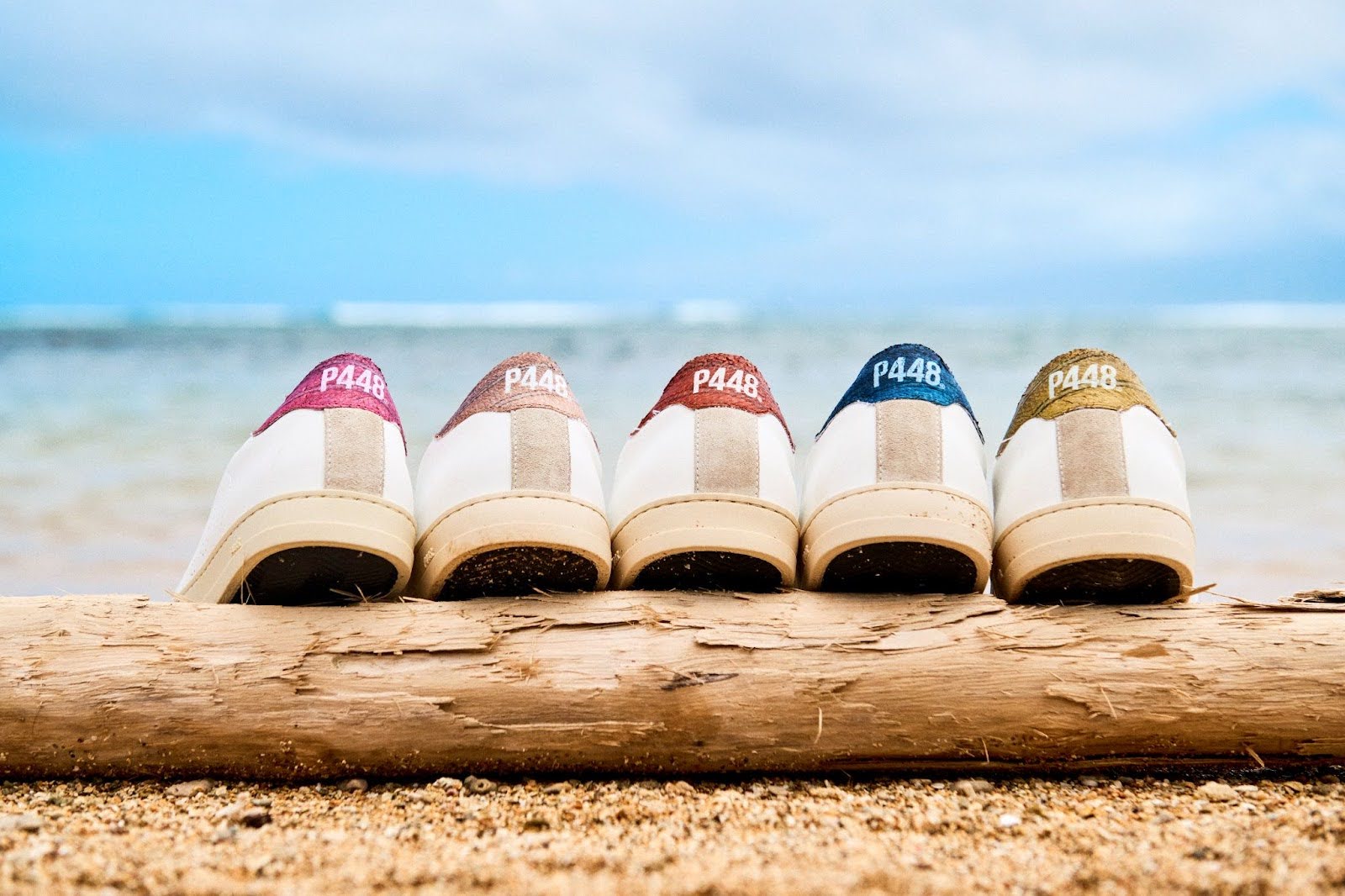
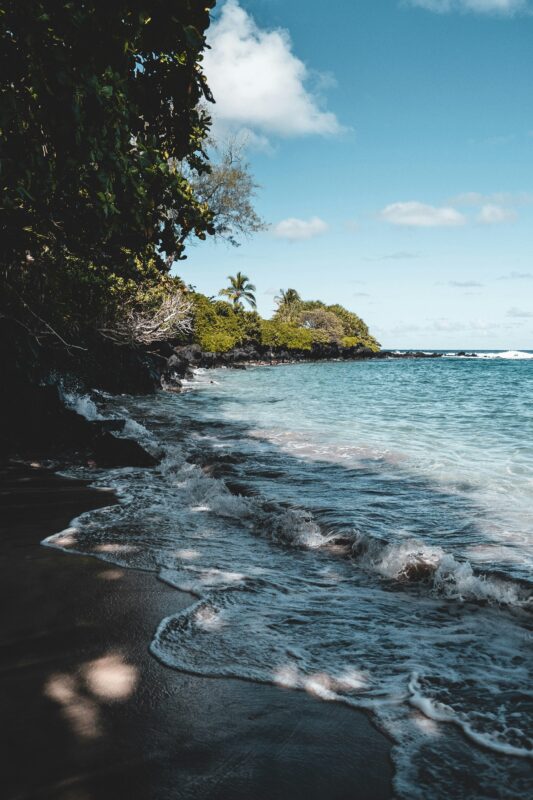

It takes months of research, testing, and trial samples to ensure the skins are wearable yet durable. P448 partnered with Aquaborne, a tannery specialising in aquatic leather manufacturing using only eco-friendly materials and processes (with no heavy metals or Chromium 6) to transform ta’ape skins into fish leather through a process that saves 80% of water and energy compared to traditional tanning methods.
Complementing other recycled and bio-based materials in the sneaker, the ta’ape skin provides vibrant heel trim detailing in a rainbow of colours. With two skins used per shoe, the end result is a supple yet pliable leather that makes a strong statement.
“Using the skin for footwear in this science-meets-style marketing of shoes is a strong example of creative, community-driven environmental action,” notes Fanara. “When done thoughtfully, turning an invasive species problem into a resource can be a powerful sustainability strategy with many benefits.”
Ta’ape isn’t P448’s first foray into invasive leathers; the brand is well-versed in charting new paths in sustainable applications, creating sneakers made with various other invasive skins, including lionfish, carp and most recently, the Burmese python from the Florida Everglades. Every pair designed with invasive leathers tells a powerful story and serves as wearable advocacy to raise awareness for a critical environmental concern.
“As a brand, we’re deeply committed to pioneering sustainable materials that lessen our environmental impact while empowering consumers to express their values through what they wear,” says Wayne Kulkin, CEO of P448. The brand aims to raise awareness, educate its consumers, and influence the fashion world in a positive way through its regenerative sustainability practices.
“The footwear is a powerful conversation starter,” says Ramsey, noting its potential as a tool to trigger impactful behavioural change.



Arguably one of the most important steps in inspiring meaningful action is awareness. “Raising awareness doesn’t just educate – it activates,” says Fanara, noting its ability to create pressure for policy change, foster community involvement in detection and removal programs, and build markets or cultural interest around solutions like harvesting or repurposing invasives.
“There is considerable evidence that public awareness and understanding of the risks invasive species pose contributes to their effective management, and is particularly important for preventing new introductions,” says Roy.
When people understand the stakes and see that their choices – from what they eat to what they wear – can be part of the solution, they are far more likely to engage, according to Fanara.
The fish once considered ‘trash’ now holds value. Two years after launching the project, Conservation International Hawai’i saw the highest recorded statewide commercial landings and sales of ta’ape in the past 20 years. Annual harvests rose by 90%, market value increased by 168% compared to 2018, and the number of ta’ape released back into the ocean plummeted.
“Human activities are responsible for the transport and introduction of invasive species,” says Roy. “But while we are the source of the problem, we’re also at the heart of the solution.”
Printed editions
Current issue
Back issues

Back Issues
Issue 43 Sir David Attenborough’s ‘Ocean’

Back Issues
Issue 41 Holdfast to the canopy
Enjoy so much more from Oceanographic Magazine by becoming a subscriber.
A range of subscription options are available.
